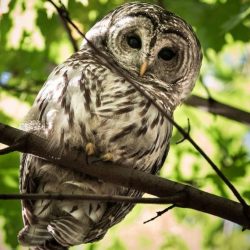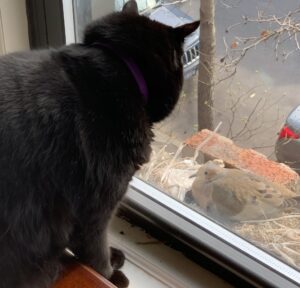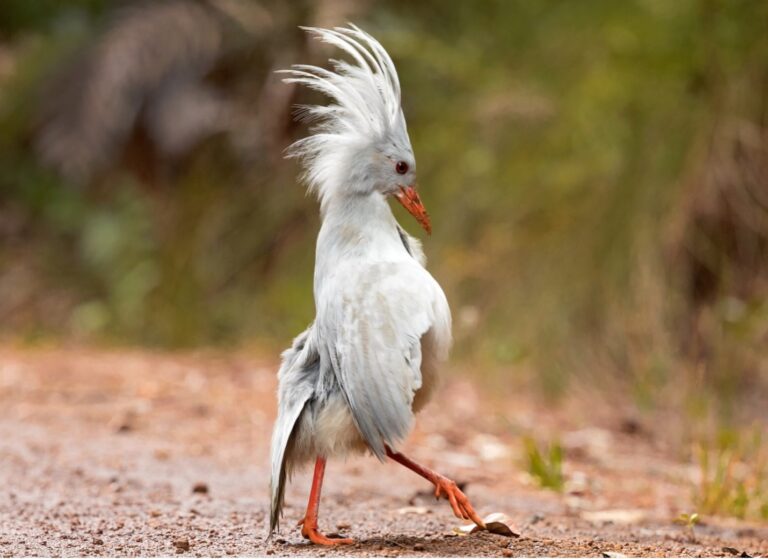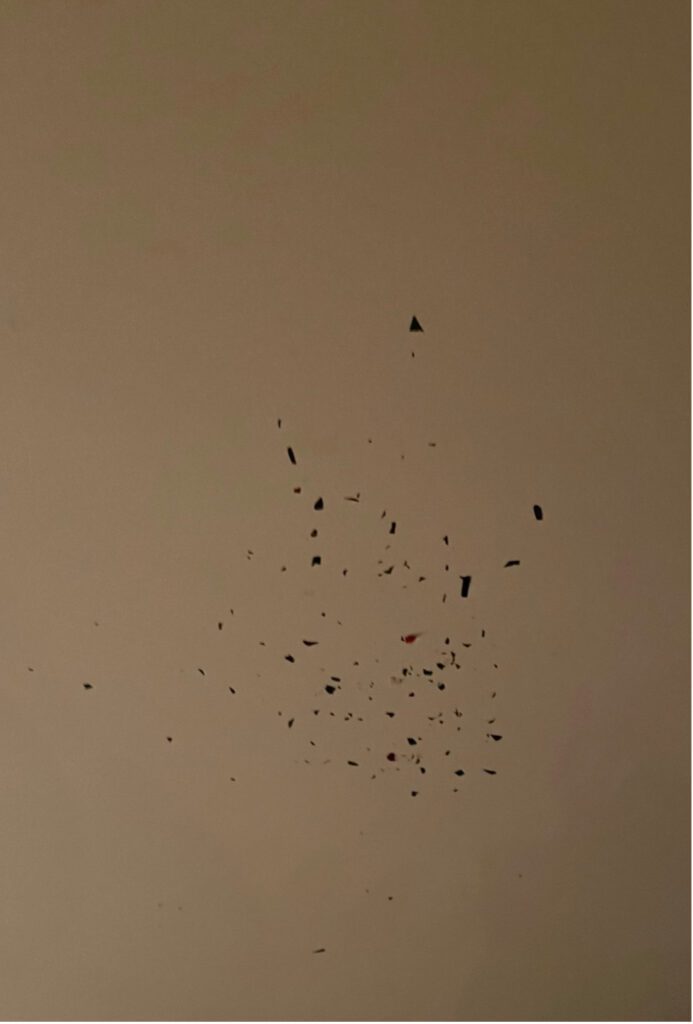
Outliving Birds
Not once did I visit Barry, the much-adored female barred owl who was hit by a Central Park Conservancy maintenance vehicle in the middle of the night on August 6th, 2021. Autopsy reports of Barry’s two-pound body suggest the bird may have died anyway, even if she had avoided the collision, given that she’d ingested, alongside a rat carcass and fish bones, an amount of rat poison that likely would have led to a fatal hemorrhage, if not impairing the bird’s ability to fly. She spent so much time looking down on us, hard to stomach how we let her die midflight like that. As is New York’s fashion, we plebs were obsessed—tweeting Barry photos, smashing likes, just as we did before Barry when tweeting about that mandarin duck who hung out in the park in 2018. Twenty years ago, a red-tailed hawk we called “Pale Male” took the top of a Fifth Ave. co-op as its perch—a bit gauche, no? Horrible name. Some people on the internet apparently think Pale Male is still alive because there is no photographic record to prove her passing. Here is a picture of Barry:

I’m trying to write about birds whom I have recently outlived or can remember outliving. Barry is the first bird I remember outliving, and likely the most popular of the outlived birds I’m able to recall—
I’ll begin with an incomplete or at least impossible list of bird-related errata from say art or literature or any other bird my memory can drum up over the course of the next ten minutes (Saturday November 13th, from 3:12pm to 3:22pm) that may aid memory. Okay go.
Alex da Corte’s sculpture of Garibaldo/Big Bird on the roof of the Met; Ann Craven’s painted birds, big and small; the birds that always happen to be flocking around the dogs that appear in Melville’s The Encantadas, as the seagulls appear over the whale carcasses in Moby Dick—scavengers; oh god that stupid shot from the Naomi Watts movie 27 Grams; all the owls and fowl in Lynch’s Twin Peaks, and Archimedes the Owl in The Sword in the Stone, grumpy and iconic; the loud, squawking bird sounds in Mrinal Sen’s acerbic Bengali metafiction Alakar Sandhane (or In Search of Famine) that my students point out work to punctuate the film’s realism to the suffering the film is trying to represent (they also tell me about an ongoing internet conspiracy theory that birds don’t actually exist and are all actually drones produced by the U.S. government); Deleuze; the sooty eagle-topped flag-free poles Sophie Kovel propped up outside her studio; The bird Freud uses in Leonardo da Vinci, A Memory of His Childhood, to make a somewhat convincing argument about sublimation, while trying to make a more complicated and far less successful claim about the artist/scientist’s homosexual desire—though, Freud’s bird, a vulture, was never really there, as Freud mistranslates da Vinci’s use of nibbio (kite) in the original Italian, for nibbio (vulture mother), but, as a footnote clarifies, Freud’s misreading in no way complicates the psychoanalytic system or the effectiveness of transference; a text just in from Kim, “I still don’t see her [the Mother Vulture who opens her vagina as she flies so the wind impregnates her,”; Poe’s Raven, screaming nevermore.
Okay, that’s time.
 In 2020, I think just days after shit hit the fan, maybe no days at all—maybe just as the shit was hitting—two mourning doves laid a pair of eggs in a nest on a windowsill in my living room in Sunset Park, where I live with my best friend, Diana Hamilton the poet and Monster the cat. The nest these doves were using was made by other birds that predated even us; when Diana and I moved in, we found the bed of twigs, plastic, scraps of paper, the spines of leaves occupied by a previous tenant, a dead pigeon whose carcass had flung off the sill and hung between our apartment and the Mohaghan’s below us, by one of its legs, which was caught by the repurposed shred of a plastic bag this bird—presumably the nests’ maker—used to build its rent-free home.
In 2020, I think just days after shit hit the fan, maybe no days at all—maybe just as the shit was hitting—two mourning doves laid a pair of eggs in a nest on a windowsill in my living room in Sunset Park, where I live with my best friend, Diana Hamilton the poet and Monster the cat. The nest these doves were using was made by other birds that predated even us; when Diana and I moved in, we found the bed of twigs, plastic, scraps of paper, the spines of leaves occupied by a previous tenant, a dead pigeon whose carcass had flung off the sill and hung between our apartment and the Mohaghan’s below us, by one of its legs, which was caught by the repurposed shred of a plastic bag this bird—presumably the nests’ maker—used to build its rent-free home.
Monster loves that window, it’s where he spends most of his time, in a bowl near the top of the window, from where he overlooks my roommate and I, the sill, and the street down. If you look at his face from beneath him, Monster has the gaze of a good analyst—perfectly ambivalent, seductive but possibly predatory. From above, I would describe his face as only necessarily needy; not suffused with the plangent ache with which dogs feign for attention—but like he wants a cigarette. And if I had one, I’d give it to him. The first two weeks of lockdown were exciting for Monster. For the first time, the two humans he edged with his choosy did not leave his lair, and there were suddenly two eggs to look at, and two seemingly monogamous birds, who devotedly took turns sitting on each egg. Oh, how the three of us loved those birds. We took turns cooing at, remarking on, and reading near them. We talked about them, and thought about their devoted, soft, warm, little tushes.
Everyone in the house participated in the ensuing drama, which lasted two weeks. Monster would be the failed hero and a massive raven the ruthless antagonist. Sunset Park is home to a small raven colony, one of the few in the metropolitan area. On three different occasions, a raven visited the nest. The first time, it flapped its wings above the nest staring through the window at a hissing Monster, who won. The raven left leaving the unattended egg be. The second time, Monster was probably busy eating or sleeping—we woke up to one of the two eggs gone.
Thirteen days into the remaining egg’s nesting period, the raven returned. It swooped through the elms that line our street, nabbed the egg, and flew off. Monster flung first, from his seat at the table toward the living room window, moaning. I yelled Diana, spilt a beer, and ran behind the cat. Diana screamed oh no and ran after me, grabbing my shirt when she saw us jump. I remember the precision with which the raven forked the two long ends of the egg with the two caliper like ends of its beak, flap flap whoosh whoosh then it gone. (Also in 2020: I ate my first ever fried chicken sandwich. It was November, election day, clammy and miserable outside. I felt miserable after voting, infuriated, sad and sick to my stomach, so I decided the only way to jolt myself out of the funk was to stuff myself with a positive experience. I walked to Sunrise Market and ordered the karaage onigiri and domed it while it was piping hot, too hot for a mouth; too bad I don’t have a beak). Delicious.
After not seeing her for two years, I met my oldest friend Sara at Bronx Zoo this past August. We both quickly took to one particular bird whose likeness, we noticed, was used on many of the placards in the park—a sunbittern, Eurypyga helias. Fine linear patterns of black, grey, and brown run along the backside of this powder-down animal whose regimes are brightly colored and, when fully fanning, form a webbed shape across its wingspan in rich browns, surrounded by reds, surrounded by yellows. Cartoon graphics of the sunbittern were the only birds that were “on view” at the zoo that day, and yet it was good to see it. We kept repeating its common name, sunbittern, as we walked around and looked at the other animals. The word had a charming asymmetry too it—the t a bit like sand in the mouth. We were attracted by the compound: sun plus bitter, sounds like beer. I learn later that the sunbittern is a monotypic species, which means it’s the only representative of a whole taxonomic family and that it shares its taxonomic order with another monotypic species—also the sole representative of its breed—called the kagu, a mostly flightless creature with ash-white plumage known to some as the “ghost of the forest” or the “grey ghost of the cloud forest.” According to a report produced by the Cornell Lab of Ornithology from March 4, 2020, there are between 250-850 living kagus left. Kagus are endemic to the mountainous regions of New Caledonia, a sui generis collectivity of overseas France in the southwest Pacific Ocean, which lacked mammals (except for bats) before the arrival of humans in the late 1700s. Not only were kagus a target of subsistence hunting by the French, but invasive species have also decimated the kagu population, who are prey to the mammals humans love hanging out with: cats, pigs, and dogs. But also rats, who, like the pigs, enjoy eating kagu nestlings, and who like us, continue to outlive them. Here is a picture of a kagu:

Earlier this summer, Diana and I were instructed not to eat the eggs we get from the local farm, and instead to throw them all away. An email thread went around on which people chimed in to describe their eggs: Some said the eggs were cloudy and the membrane of the yolk tore easy. Some had discolored yolks, some the wrong consistency. Completely watery and cloudy inside. Pinkish tones. One person performed a quick google scan which suggested bacterial contamination. Streaks of red “like blood vessels.” Some got eggs that arrived cracked, as if from the inside out, while some received others that just didn’t seem right when cracked open. The CSA decided to contact Lester, the egg and fowl farmer, with complaints: the eggs are getting worse. What are you going to do? Lester responded with an apology. He’d had family issues which meant that he wasn’t tending to his farms or to the time-sensitive city deliveries to bitchy families like my queer one. It turns out the replacement driver kept the eggs in the bed of his truck while working another job, where they spoiled or ruined. We decided to obey orders and throw the eggs away.
Partied over the weekend; left my favorite black suede blouse at Sarah’s house, under the corks and the confection Nash spread. Why am I so forgetful? When I went back to pick it up, I speak to Jasmine and Janique about avian memory—specifically, birds’ penchant for revenge. Crows’ little suede bodies, for instance, “keep the score” of their mothers and fathers. What humans experience as intergenerational hangovers—trauma—crows experience as intel: while still in the nest, mom crows and possibly dad crows outline the facial features of those who have upset them to their offspring so that if, say, the kids find the upsetting human, they can confidently settle their scores. A la Hitchcock’s The Birds, or the series Chillers, Samuel Fuller’s final “film”—an Alfred Hitchcock Presents-style omnibus film with four shorts, each short based on a Patricia Highsmith story. One of the four, “The Day of Reckoning,” based on the story of the same name, is about a young man named Jean Arnaud who begins to have nightmares after visiting his obsessive uncle’s automated chicken farm in the French countryside. Uncle Andre’s the inventor of a new system that manipulates chickens into laying more eggs by depriving them of natural light. I hate inventions. In Jean’s dreams, the chickens speak, riot, and take over the farm (one dream sequence includes an atonal funk rendition of “Old MacDonald” clucked by the chickens). Recounting shooting the film’s final sequence in his memoir A Third Face, in which Uncle Arnaud is locked in the chicken coop by his wife where, you guessed it, the fowl peck him to death, Fuller says he has no idea that the “poor animals,” meaning those brought in to “act” in the film “would be driven mad by their first contact with direct sunlight.” He recounts his solution like a triumph:
“Since the animals were soon going to be slaughtered anyway, [the farmer] was only too willing to have them die and charge the producers for damaged poultry, making double money on the deal. It was one of the saddest, most agonizing spectacles I’d ever witnessed. Blinded and terrified, the maniacal chickens scurried around until they finally dropped dead on the ground right in front of our crew. We hurriedly shot the scene before the chickens were nothing more than a sea of quivering feathers.”
Here’s a picture of the ceiling right after Nash set off the confetti bomb at the party:

I’m walking back from Quarter Bar, listening to Asha Bhosle’s “Hori in Kukubh Bilaval,” a track she recorded with Ali Akbar Khan in the early 1990s. When I was a kid, I didn’t think much about what Asha sang. Her voice like taffy, weighty like Khan’s sarod, like a silken gauze for my oozy, unformed preteen mind—all feeling. I think I assumed the whole album was about God, so decided to tune it out, but listening to it now, I hear her clearly say “haran,” which may mean peacock, but also, I’m on wine, so I’m not for sure for sure.
I decide my interpretation of the Urdu is spot on and that the song is straight up about a peacock. I hear Asha sing: A peacock, it turns a corner. The peacock, its turning a corner. When I get home, I use the internet. I was way off. The lyrics to the song are neither about God nor about peacocks but about being a boy that’s being kidnapped; I realize also that the track is untitled and that its track’s name refers to the thaat (“kukubh”) and raag (“bilaval”) the song is performed in. Bilaval raags, I read, are meant to be performed in the morning hours.
Following Piece using birds, 16 November 2021:
11:00AM; at Yafa Café on the corner of 4th Ave. and 45th St.
A wren or possibly sparrow flies by without stopping to land
11:15AM; corner of 4th Ave. and 45th St.
A sparrow in a planter, he hops to the other side of it, then he hops back; flutters away as I approach
11:15AM; corner of 4th Ave. and 45th St.
Another sparrow in the same planter as above, moves up to perch on the steel fence, moves up an American Elm and disappears
11:17AM; on 45th St. between 4th and 5th Ave.,
A wren sitting in the middle of a stoop bounces to the next step up and then flies away 11:30AM; corner of 5th St. and 44th Ave., entrance to Sunset Park
A wren follows another wren from the concrete path to a patch of grass. They flutter for a few moments together and depart ways; the wren looks to its left and its right, and then it turns its body to see what is behind it.
11:31AM, the wren heads north.
11:37AM, along the 44th St. side of Sunset Park, facing north (toward 6th Ave. entrance)
Two northern flickers glide from the branch of a tree over the fence and out of the park landing on the sidewalk on 44th St., behind a human running.
11:46AM; top of Sunset Park, between 5th and 6th Aves., near the restrooms.
A sparrow chews on a piece of bread while bouncing around near the chess tables, it bounces in a circle as it finishes the bread; it pecks at dirt, flies off.
11:50AM; corner of 44th St. and 6th Ave., entrance to Sunset Park
A wren holds a stick and drops it, walks out of the park.
12:00PM; corner of 4th Ave. and 45th St.
Two sparrows are on the top of our stoop, as they are approached, they leap onto the neighbor’s lilac tree, and then further up and out of sight.
All images courtesy of the author.
Shiv Kotecha is the author of The Switch (Wonder) and EXTRIGUE (Make Now Books). His criticism appears in publications including 4Columns, BOMB, Aperture, and frieze, where he is a contributing editor. He lives and works in New York.

